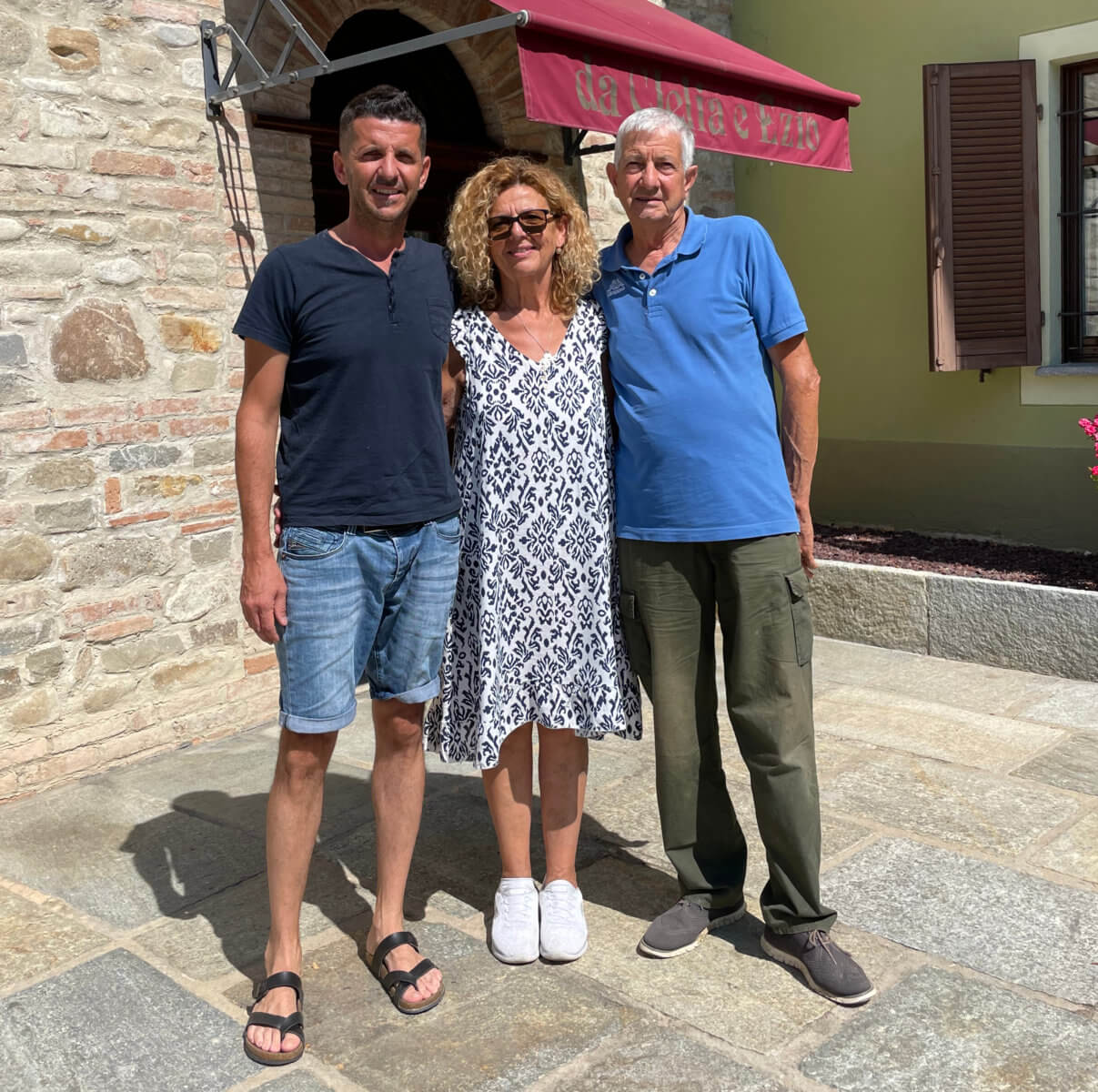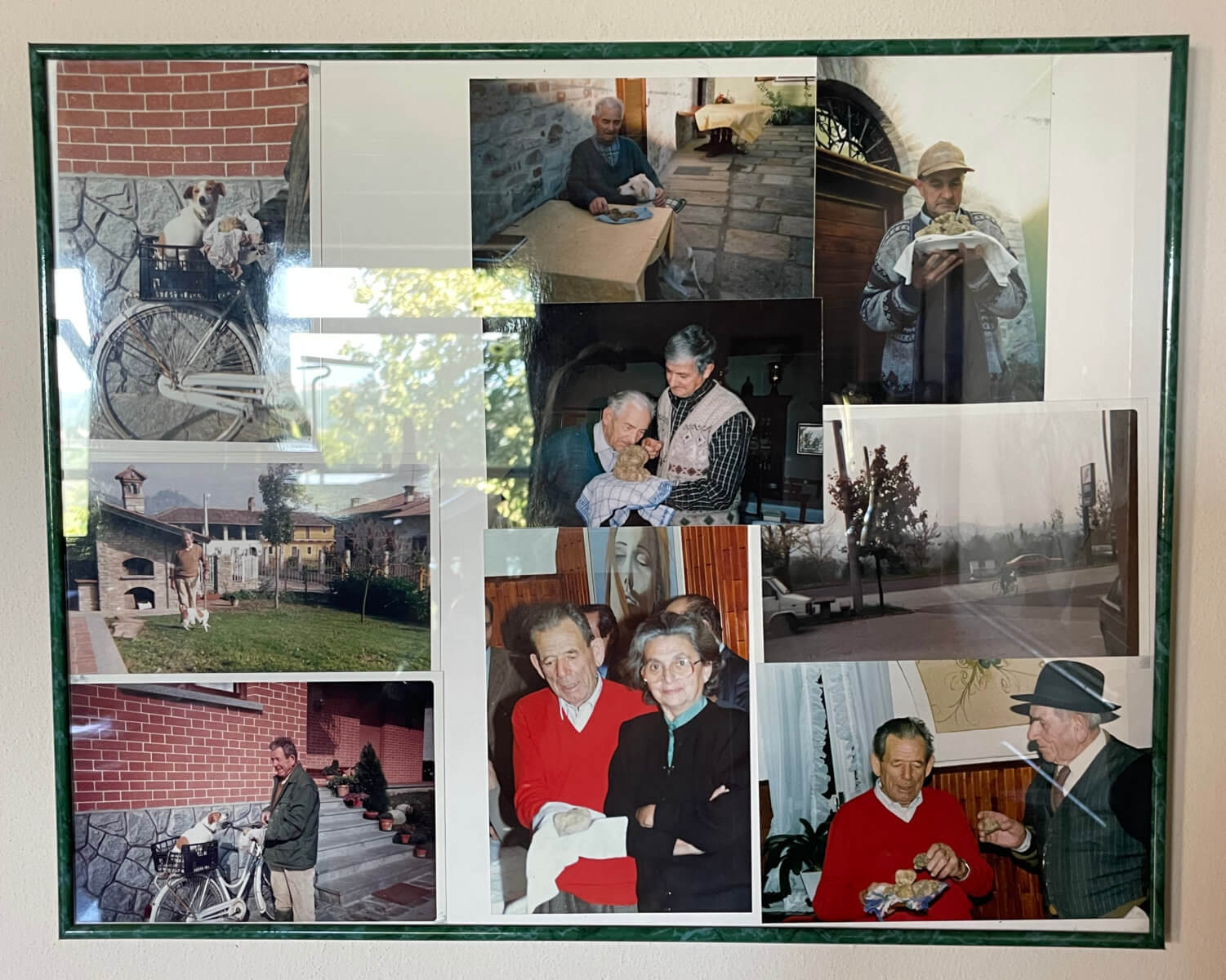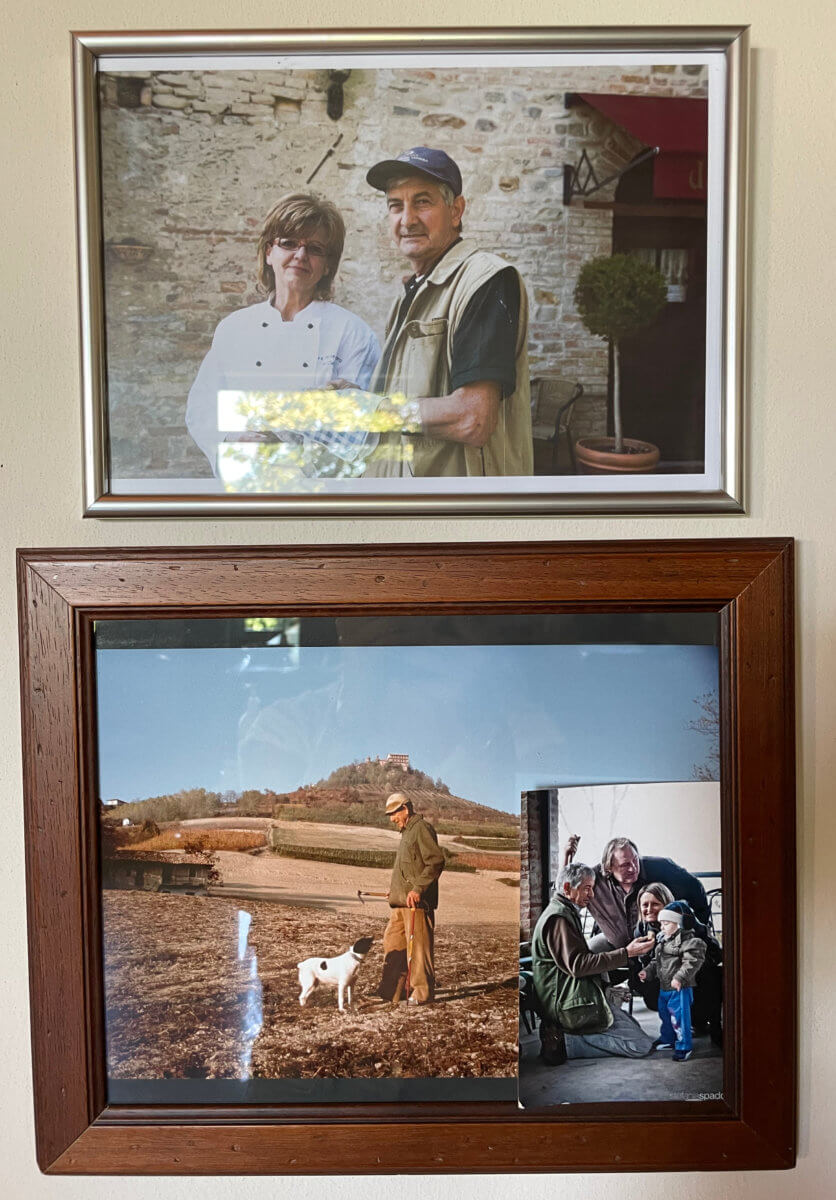A small, uneven fungus that packs such an aromatic punch and is considered globally as a prized, luxury ingredient. Ever wondered how truffles grow and where you can find them? Luxeat recently spent some time exploring the north west of Italy and sat down with a truffle-hunting family with a legacy of four generations behind them, harvesting this rare and unique product.
“White gold” from Alba
A small, uneven fungus that packs such an aromatic punch and is considered globally as a prized, luxury ingredient. Ever wondered how truffles grow and where you can find them? Luxeat recently spent some time exploring the north west of Italy and sat down with Ezio Costa, wife Clelia and son Filippo, a truffle-hunting family with a legacy of four generations behind them, harvesting this rare and unique product. Born in 1947, Costa is one of about 5,000 ‘trifulau’ in the region, hunting truffles since he was just 14 years old with his dogs. He passed on the tradition and his passion to his son Filippo, born 1976, who alongside his position as an architect at a studio in Alba, has accompanied his father since he was small. This is a story woven by history and traditions, telling of the delicate balance between nature and seasons, of patience and of rich flavours that foodies dream of.

Aiste: First, I would like to know about your family. What you do, about you and where you live…
Filippo: We live in Monchiero, a very small village with a population of just 600 people, and our lives are centred around growing and harvesting truffles. We run a restaurant with rooms, perfect for group trips, as well as some holiday houses where most of our visitors stay. They are surrounded by beautiful woods filled with the trees that grow the truffles at their roots. At the moment the farm is run by just three of us, my father, my brother-in-law and myself, but we all come from a family with a long history of truffle hunting. This house that we are in now was owned by my great grandfather’s generation, who began this tradition.
You also have wine, the beautiful Nebbiolo which we’re drinking at 11 o’clock in the morning. It’s perfect. A perfect life!
Filippo: Yes, for 25 years now we have been making wine and have some well-positioned vineyards in Monforte where we nurture the grapes to produce Nebbiolo d’Alba and Barbera d’Alba. So we are divided between truffles, wines and our home!
You mentioned that your grandparents have always been truffle hunters. Could you share some history about how long people here have been hunting truffles? Was it always a product of luxury? Because as you know, whenever you are in London or New York, it’s very expensive and luxurious even more than the black truffle.
Filippo: We don’t know exactly when mankind started hunting truffles, but we know that since the Romans, truffles were already in abundance and this was the region favoured by the king. There is something special about our particular truffles, named Tuber Magnatum Pico and widely known as the best truffles in the world. But despite this, it’s normal for us to have fine truffles on the table. We know that they are a luxury product but how they are actually grown is still somewhat of a mystery. The connection between the trees and the ground is very important, as it’s the spores from the trees that grow the truffles, but many other factors can influence the production: the humidity, the position, the type of soil, the weather condition. Each season is different. So whilst there are many studies about the growing of truffles, it is still a mystery (even to the people that grow them – particularly the white variation!).
We know that they are a luxury product but how they are actually grown is still somewhat of a mystery.
So what are the perfect conditions to grow truffles here? Whether it’s the plants or trees or the weather?
Filippo: The weather has a huge impact but the trees are the most important factor. We know that in the past, our ancestors found many more truffles than we do now. There is speculation that the rising levels of pollution are to blame, but in actual fact, the deforestation of trees for the production of grapes and wine plays a large part. If you plant grapes you are at least certain that you will have wine, but it’s different and more unpredictable with truffles, so a less popular craft.
The king of the trees is the oak, but other species like linden and some poplars, when combined with the oaks, are equally important. Additionally, we grow truffles with hazelnut trees but they produce mostly black truffles, whereas the other trees grow both white and black truffles.
Clelia: Yes, black truffles grow in both the summer and winter; there are something like 60 different varieties of black truffle that we know of.
Filippo: Last year we planted more than 500 trees and we expect they will grow Périgord truffles, but we won’t know for 7-10 years, so patience is a large part of the job! The white truffles are more precious, harder to find and fewer in quantity. You might find 1 kilogram of black truffles in a day, but it would take a week to find the same amount of white truffles. This is only if we are lucky enough to have a good season and accounts for the higher prices.
Do you hunt for truffles every day during the season? If it’s a secret don’t tell me.
Filippo: During the black truffle season, we hunt two to three times a week. White truffles we go out at least three times a day, every day and sometimes for the whole day. It depends largely on how much is growing; normally we leave at three o’clock in the morning when it’s still dark and hunt until seven o’clock. The dark is the best time to search because the dogs can concentrate more easily and are not disturbed by other noises. It’s also dark so that other truffle hunters can’t see where you’re hunting! Then we’ll go out again a few times during the afternoon, so at least three times each day. We have our own dog which we start training when they are puppies.
If you plant grapes you are at least certain that you will have wine, but it’s different and more unpredictable with truffles, so a less popular craft.
Is it a special breed of dog?
I heard that the world of truffle hunting is very competitive. How many people come to this region to hunt for truffles during the season?
Filippo: Any dog can be trained as a truffle hunter, though they say the best breed is lagotto romagnolo, an italian breed originating from the eastern Romagna region. Having said this, if you go hunting you might see all types of dog, big, small, large or thin. Normally we train young white dogs because it’s easier to spot them during the night. We usually train females because they are quieter, more amenable and generally easier to train. We begin training when they are puppies, starting by giving them black truffles to eat and play with, to find out whether the dog is interested in truffles or not. If they aren’t interested in playing with the truffles it often makes it very difficult, and sometimes impossible to encourage them to hunt them. As time goes on, we teach them to hunt the truffles for us instead of for themselves. It’s quite a long process and we need about two years to understand each other.
Filippo: It’s a good question, too many! Around 5,000 in Piemonte, but you need a special licence to hunt truffles that is different for each region.
So I can’t just go truffle hunting whenever and wherever I please?
Filippo: No, sadly you can’t. In order to get the licence you have to take an exam and pay an annual fee to the “Regione Piemonte”. There are currently 5,000 official hunters in this region, though there are plenty of illegal hunters that don’t have licences. Another thing is that with a licence you are entitled to hunt anywhere, even on private property which I know seems strange but it has always been the way.

Oh, you’re allowed to do that here? Because I once heard a story where someone was hunting on private property at night in France and he was shot.
Filippo: Yes this can also happen here if you hunt on private land, but there isn’t so much private property here. For example, we only have two private areas here, though people often hunt there anyway. But it is very competitive… This area is usually tame in comparison to others because it’s small and everyone knows each other. But in other areas, they sometimes poison the dogs and do other harmful things which can be very sad.
So do people then sell them in the market in Alba, or directly to restaurants?
Filippo: Yes, mostly directly to restaurants and to some private customers because they know us, they know the truffle hunters and this relationship is maintained when they buy directly. But yes, there are also truffle hunters who sell their truffles at the market, especially during the truffle season as it’s great business.
So the price depends on the quantity. What are the good weather conditions that give you a lot of truffles? And how do you know when there will be lots?
Filippo: It’s quite difficult to tell, but we do know that spring rain is vital because it encourages and sometimes accelerates growth. If truffle season has been slow and it rains in August, this is good and should hopefully speed things up. Studies say that despite needing many years to form and grow, the final maturation process of truffles is very quick. In just one hour, you might find more truffles in the same place that you have already harvested earlier that day, this is why we go out hunting two or three times a day. It is during this time that the smell becomes really apparent too.
How do you know it’s a good truffle?
Filippo: The best truffles have the aroma, the perfume of truffles, but when you hold a good one, you can feel its density and weight. It should be hard, but not too hard. If the truffle is too soft, it’s not so good. Sometimes we find truffles that are too mature and generally they’re better hard and fresh.
Studies say that despite needing many years to form and grow, the final maturation process of truffles is very quick. In just one hour, you might find more truffles in the same place that you have already harvested earlier that day, this is why we go out hunting two or three times a day.
And how long can you usually keep truffles? What are the right storage conditions if let’s say I buy them in the market?
Filippo: There is a big difference between black and white truffles because you can keep black truffles for two or three weeks in the fridge, if they’re fresh. When we harvest them, they are at their peak maturity, giving out a strong and rich fragrance. White truffles can be kept for up to one week, but for the best quality, just three or four days. After this, the truffles become too mature and the aroma fades. You can keep them in kitchen paper in a glass or plastic box in the fridge for up to five days. You have to change the paper every two days because the truffles shouldn’t be too humid – they’re ever-changing!
But for example, in Tokyo, some chefs have amazing truffles, even though they are transported across the world. Do you know how this works?
Filippo: Yes, there is special express shipping that takes two days from the date of ordering. We sometimes ship truffles to my father’s friends in Canada and Hong Kong using this service, making sure to send the freshest ones so that they last longer. We package them in synthetic rice, which is better than natural rice as this can dry out the truffles, removing any of the essential humidity.
Is it the same with all the truffles or only with white truffles?
Clelia: All truffles. The rice would be very delicious, but not the truffle!
Climate change. Have you noticed over the years how the climate changed, and has this affected finding truffles?
Ezio: Climate change has influenced the growth, especially because it altered the sequence of the seasons. White truffles, for example, used to be found in August as the summer was cooling off. Now, you might not find them until the end of September instead, so everything has shifted slightly.
Clelia: In the past, September and October were very cold, now the hot summers delay the truffle season.
Filippo: We have to say that this year is special because it’s not every year like now, but it’s very hot.

Tell us about fake white truffles, mistaken for Alba truffles? Because as you know, there are many people who grow them anywhere. What do you think of them? And how do you tell the difference and everything about that…
Ezio: It’s very difficult to tell them apart, you have to buy the truffles in Alba to compare them and to understand if they’re from this area or not. You can tell them apart by the different smells, Alba truffles smell more intense.
Filippo: Also, our truffles have different colours, sizes and dimensions… It depends a lot on the trees. For example, the white truffles from the oak are more brown and the truffles from linden and poplar trees are paler. So of course you can see the difference. The smells are strong but similar, sometimes influenced by the ground and the soil. It’s different here too, in this area it’s more moist, but if you move to Asti for example, it’s more sandy and they also grow good truffles. But yes, it’s difficult to identify the fake truffles.
But is there any control?
Ezio: In the past it was probably more difficult, now there are many regulations in place to control it, especially in the big markets. They have to be declared if they are from Alba, from Croatia or from other lands. But what we know is that during the truffle fair, the biggest annual market, they censor every truffle you sell, controlling the quality and freshness. If it’s good, you can sell it, but if not, they take the truffles away. In the past it wasn’t really like this, but it’s better for the customers because they know that the truffles they are buying are of the highest quality.
What are your favourite dishes to cook with truffles?
Clelia: The black ones you can cook, the white ones you can only eat raw and fresh, and use for dishes like risotto, pasta, eggs etc. Truffles give everything a special taste. The best is a simple egg, pan fried, just with bread, white truffle and butter, it’s fantastic. Fonduta too!
Filippo: The best dish that Clelia makes with white truffles is a poached egg covered with fonduta, fontina cheese which isn’t too strong, and then covered with white truffles. This is my favourite because the warmth of the fonduta enhances the aroma of the truffle, so it’s an experience for the senses.
Clelia: It is good on a cold tartar as well, but it’s very different. I prefer truffles on a warm dish, because you breathe in the truffle, whereas on a cold dish you can just taste the truffle.
Do you eat white truffles every day when it’s the season?
Clelia: This would be great! But yes, quite often. The small ones we don’t sell but use for everyday cooking.
Filippo: My kids eat them like candies!
